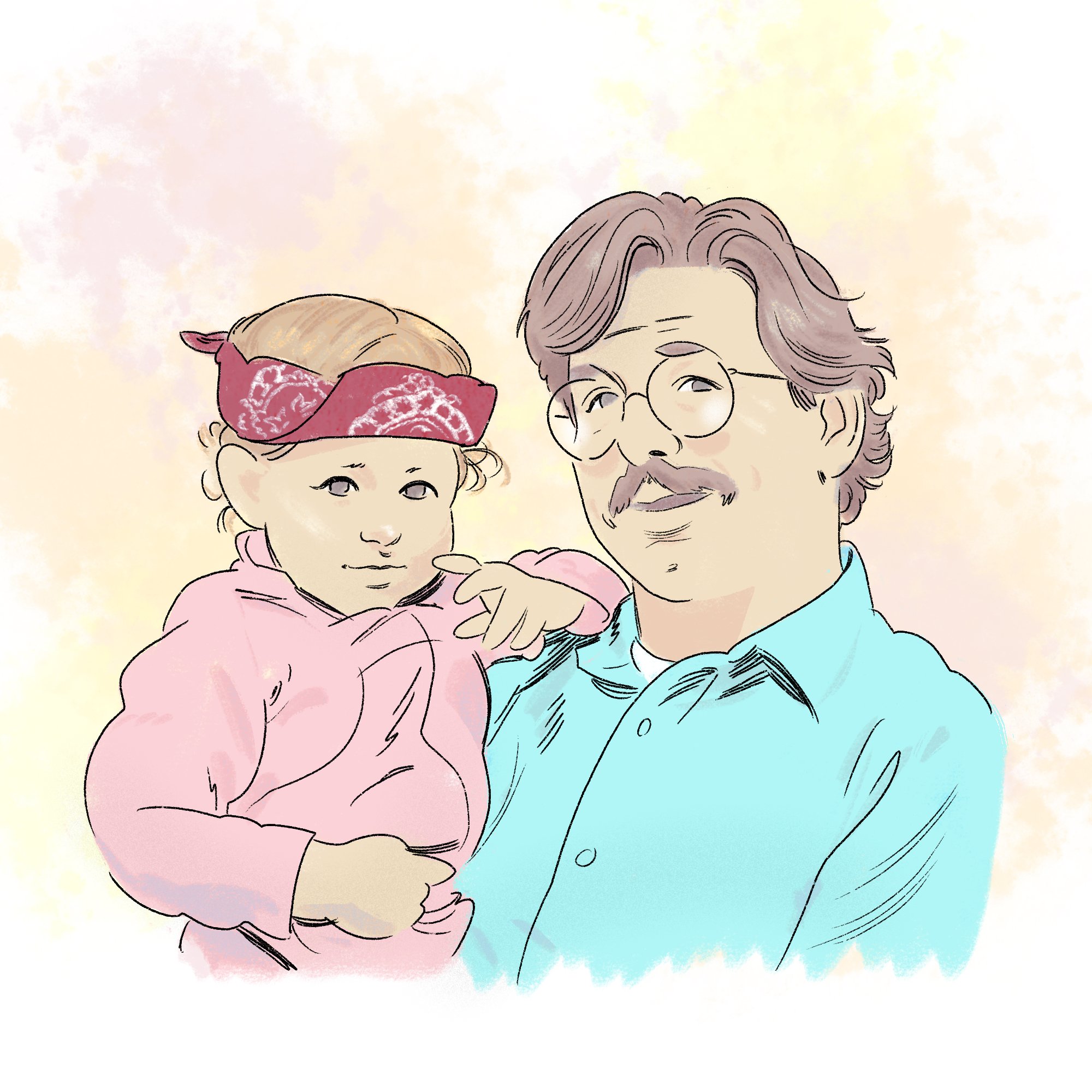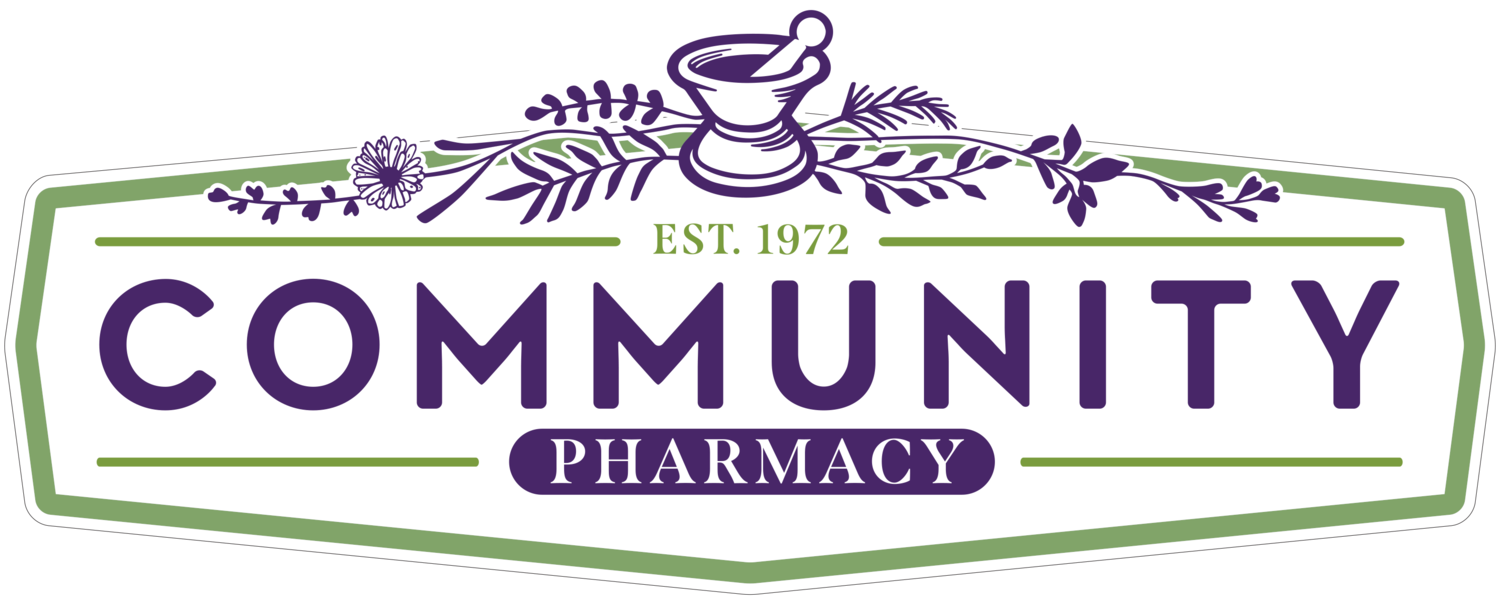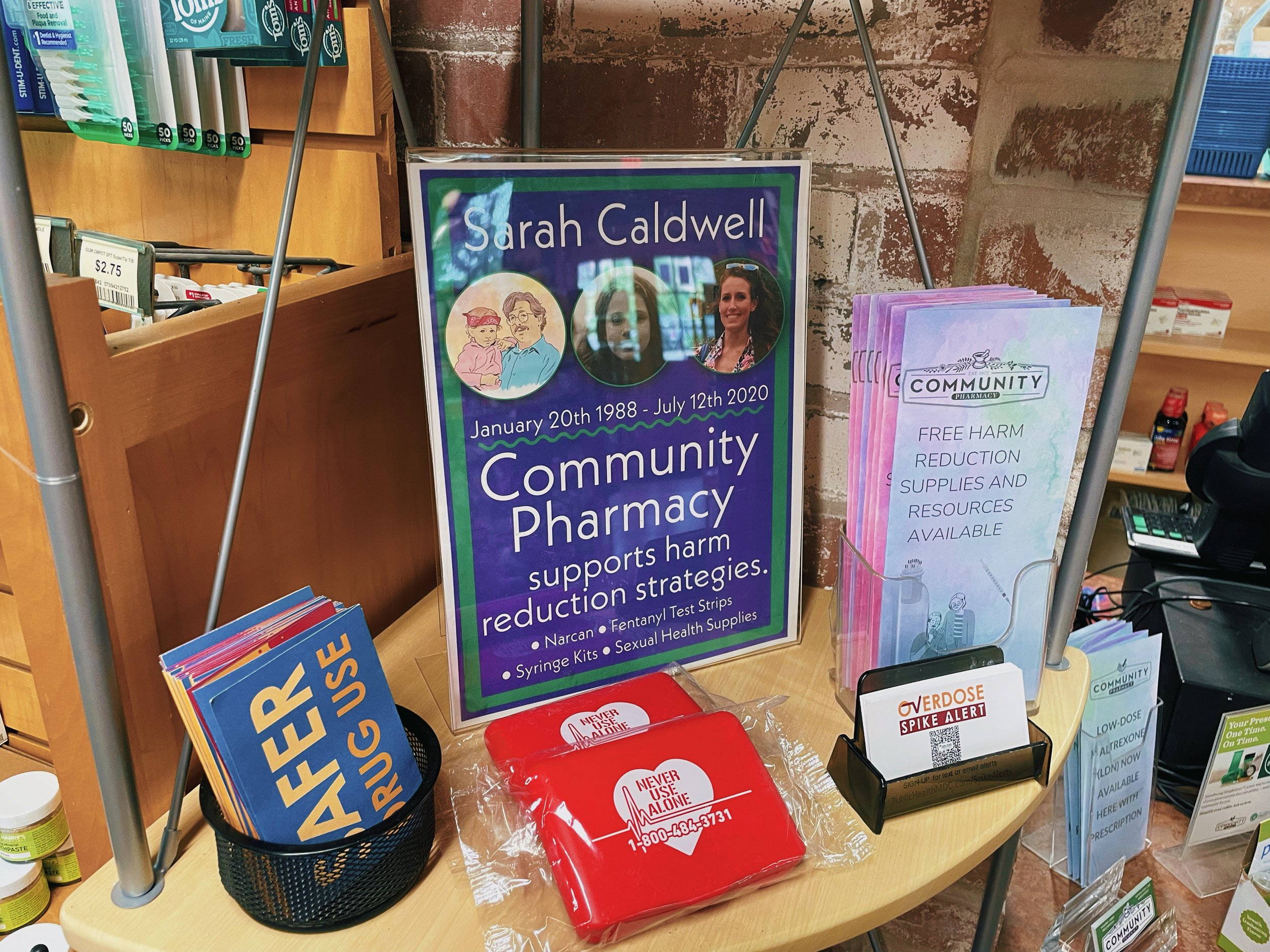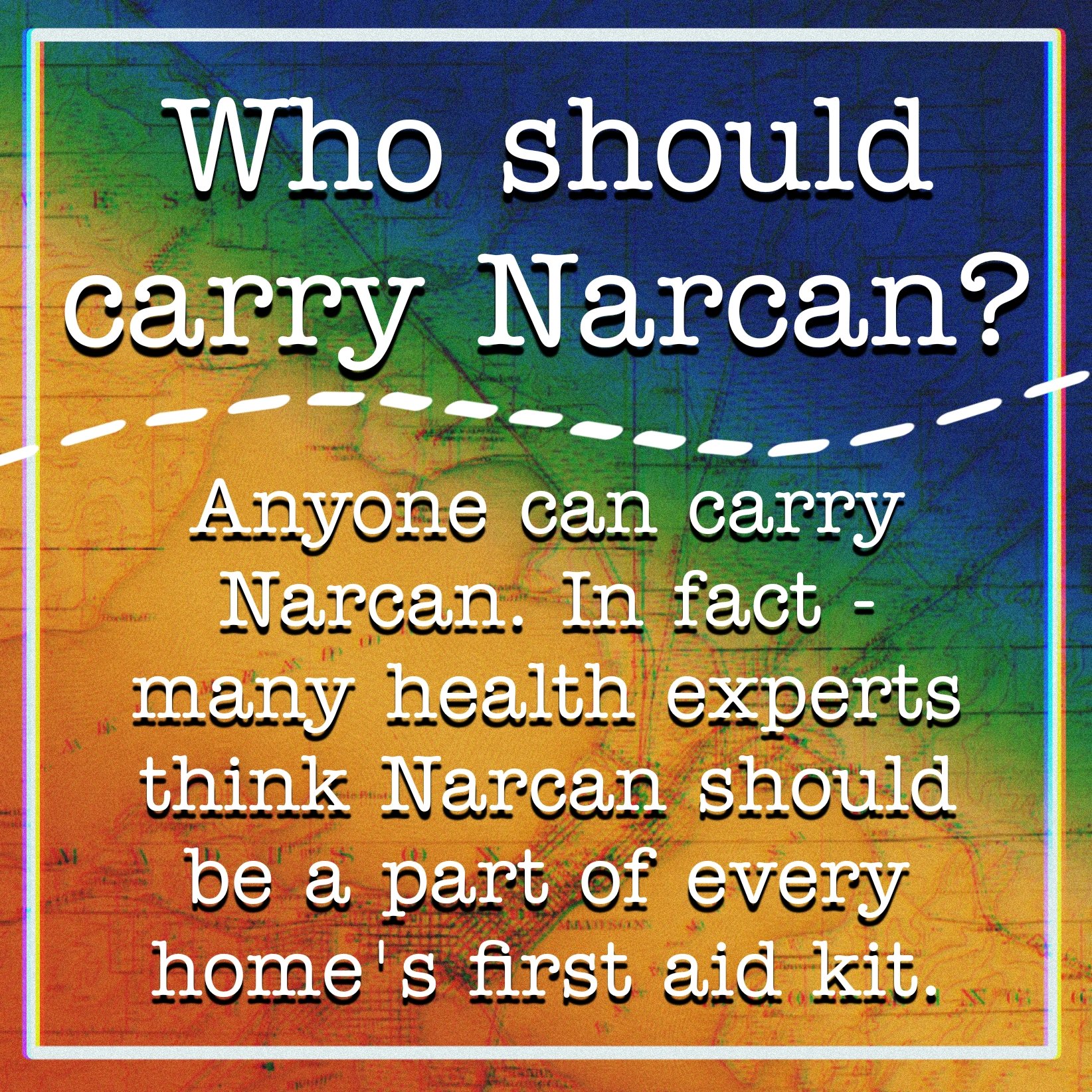Harm Reduction at Community Pharmacy
Community Pharmacy is is dedicated to ending the stigma around substance use with effective harm reduction strategies.
Jacky and Caitlin hand out harm reduction supplies at Outreach Magic Pride Festival in 2022.
Harm Reduction at the Pharmacy
In recent years, Dane County has seen a significant increase in the number of opioid overdoses and deaths. This problem is affecting individuals from all walks of life, and Community Pharmacy is dedicated to doing whatever we can to help. We are part of the Wisconsin state Naloxone protocol, which allows the pharmacist to provide Naloxone without direct prescriptions to individuals at risk of an opioid overdose.
The pharmacy can also provide Naloxone in the form of nasal Narcan to family, friends and anyone who may witness an opioid overdose thanks to our partnership with Public Health Madison & Dane County. Public Health MDC also provides us with Fentanyl Test Strips, Syringe Kits, Drug Disposal Kits, Never Use Alone first aid kits and informational pamphlets on safer drug use.
Vivent Health provides us with free sexual health supplies and information for the community. We have multiple types of condoms, dental dams, and lubricants available for free at our Pharmacy counter, as well as information on HIV testing and medications. For more information on HIV resources, click here.
We have recently received a grant from the SASY Neighborhood Association to provide Narcan to the public at local businesses and events in the SASY Neighborhood. If you are a SASY Neighborhood business that would like more information on having Narcan or other Harm Reduction Supplies at your location, please contact us.
Fentanyl Crisis in Wisconsin
Due to an increase in Fentanyl overdose deaths, the Department of Health Services (DHS) asks Wisconsinites to take action to prevent overdose deaths. Over the last year, synthetic opioids, primarily Fentanyl, were identified in 91 percent of opioid overdose deaths and 73 percent of all drug overdose deaths. Provisional data shows the number of Fentanyl overdose deaths in Wisconsin grew by 97 percent from 651 overdose deaths in 2019 to 1,280 in 2021. The sharp increase in overdose deaths is not only impacting those who use opioids. Cocaine deaths involving synthetic opioids increased by 134 percent from 182 deaths in 2019 to 426 in 2021, and it is estimated that as many as 40 percent of counterfeit pills contain enough Fentanyl to be lethal. The impact of substance use in Wisconsin is devastating and we can all play a role to support healthy communities, support recovery, reduce harm and prevent deaths related to opioid and other substance use.
According to the CDC, 107,375 people in the United States died of drug overdoses and drug poisonings in the 12-month period ending in January 2022. A staggering 67 percent of those deaths involved synthetic opioids like Fentanyl. Some of these deaths were attributed to Fentanyl mixed with other illicit drugs like Cocaine, Methamphetamine, and Heroin, with many users unaware they were actually taking Fentanyl. Only two milligrams of Fentanyl is considered a potentially lethal dose; it’s particularly dangerous for someone who does not have a tolerance to opioids.
Fentanyl Test Strips
What are Fentanyl Test Strips?
Fentanyl test strips (FTS) are a low-cost method of helping prevent drug overdoses and reducing harm. FTS are small strips of paper that can detect the presence of Fentanyl in all different kinds of drugs (Cocaine, Methamphetamine, Heroin, etc) and drug forms (pills, powder, and injectables). FTS provide people who use drugs and communities with important information about Fentanyl in the illicit drug supply so they can take steps to reduce risk of overdose.
Fentanyl Test Strips are Available
for Free at Community Pharmacy!
Narcan is Available for Free at Community Pharmacy!
















Madison woman struggled with depression, grief from losing parents
David Wahlberg - Wisconsin State Journal
As a teenager, Sarah Caldwell struggled with anxiety and depression, taking prescribed medications and “self-medicating” with alcohol, said her stepmother, Annette Czarnecki.
When Caldwell was 22, her mother died by suicide, which “led to a downward cascade and eventually increasing hard drug use,” said Czarnecki, of Madison.
In August 2019, Caldwell’s father, who was Czarnecki’s longtime partner, died from complications of cancer treatments. Caldwell did inpatient addiction treatment that fall, but grief from the death and isolation from the COVID-19 pandemic led to relapses, Czarnecki said.
Caldwell, 32, of Madison, died in July 2020 from an overdose involving the opioids heroin and codeine, the anesthetic ketamine and the antidepressants Bupropion and Venlafaxine, according to her death certificate.
“She would say to me, ‘I know I need to stop using, but my brain just won’t let me,’” Czarnecki said.
Addiction can happen to anyone
One in 7 Americans reports experiencing a substance use disorder. There is not one single driving factor that leads to addiction. Some people may use drugs to help cope with stress, trauma, or to help with mental health issues. Some may even develop opioid use disorder after misusing opioids they are prescribed by doctors. In any case, using drugs over time makes it easier to become addicted.
Drug use and effects on the brain
When people take drugs, the brain is flooded with chemicals that take over the brain’s reward system and cause them to repeat behaviors that feel good but aren’t healthy.
The brain adapts to continued drug use by developing a tolerance, which means it takes more of a drug to feel the same result.
Not only does this lessen the brain’s ability to resist temptation, but it can also affect the amount of pleasure a person receives from normal, healthy activities like enjoying food or the company of others.
Addiction is a treatable disease
Addiction is a disease, not a character flaw. People suffering from Substance Use Disorders have trouble controlling their drug use even though they know drugs are harmful.
Overcoming a Substance Use Disorder is not as simple as resisting the temptation to take drugs through willpower alone. Recovery may involve medication to help with cravings and withdrawal as well as different forms of therapy. It may even require checking into a rehabilitation facility. Recovery can be challenging, but it is possible.
Substance Use Disorders in LGBTQIA+ Communities
People who identify as LGBTQIA+ often face social stigma, discrimination, and other challenges not encountered by people who identify as heterosexual. They also face a greater risk of harassment and violence. As a result of these and other stressors, sexual minorities are at increased risk for various behavioral health issues including Substance Use Disorders and risky sexual behaviors.
Additionally, LGBTQIA+ people are also at increased risks for Human Immunodeficiency Virus (HIV). HIV infection is particularly prevalent among gay and bisexual men (men who have sex with men) and transgender women who have sex with men. Substance Use Disorder treatment can also help prevent HIV transmission among those at high risk. For example, addiction treatment is associated not only with reduced drug use but also with less risky sexual behavior among men who have sex with men.
Community Pharmacy is proud to partner with Vivent Health to provide free sexual health supplies and resource information for everyone in our community.
Overdose Spike Alerts
Public Health Madison and Dane County tracks hospital and ambulance data to look for unexpected increases, or spikes, in drug-involved overdoses. If they see a spike, they send out an alert. Their alerts give as much detail as they can to prevent overdose deaths.
What can cause a spike?
A change in the local drug supply may cause a spike.
Very strong opioids - such as Fentanyl - are being mixed into all types of drugs. This includes heroin, cocaine, counterfeit or fake prescription pills, meth, and cannabis.
What should you do if there is an overdose spike?
For people who use drugs
Take Steps for safer drug use (pdf):
Test all drugs for fentanyl (pdf) before using
Carry Narcan® (naloxone)
Get safer use supplies, including fentanyl test strips and Narcan® from the Syringe Services Program :
Public Health MDC: 2705 E. Washington Ave. or 2300 S. Park St. Community Pharmacy: 130 South Fair Oaks Avenue.Avoid using street drugs alone; call Never Use Alone at (800) 484-3731
For everyone in our community
Recognize the signs of an overdose:
Pale, sweaty or clammy skin
Lips/fingertips turn blue
Slow or irregular breathing: gasping, gurgling, or snoring
Difficult or unable to wake
Always call 911 if you suspect someone is overdosing
Contact the Behavioral Health Resource Center of Dane County for treatment and recovery resources: (608) 267-2244
















